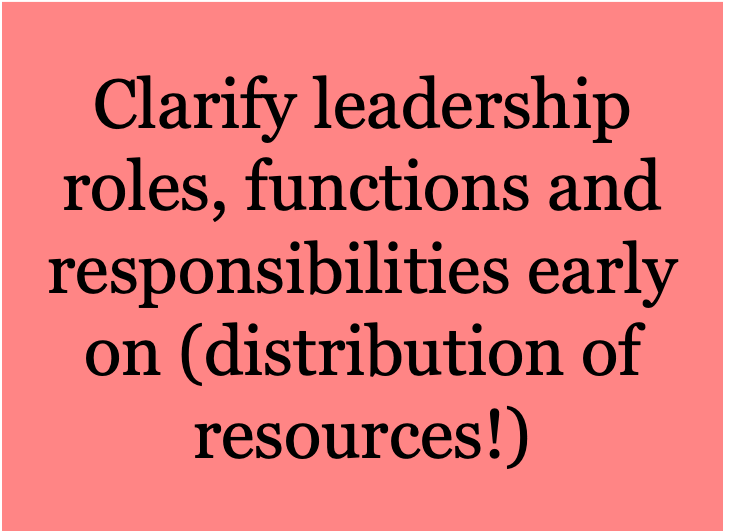
Hospital Mergers: Risky and at the Same Time Unavoidable
In most cases, hospital employees are or have been personally affected by hospital mergers in the past. Only rarely do they combine this experience with positive memories. Hospital mergers place great demands on the staff and especially on management. A return on this above-average effort is anything but certain for them. Only a few projects in Switzerland have been successful and have strengthened the position of the affected hospitals in the market in the long term. And things will not get any easier in the future. So what can we learn from past projects?
An article by Christoph Jäggi, Managing Partner at walkerproject
In the last 20 years, about a quarter of Swiss hospitals have disappeared in the acute care sector. They have been merged and/or closed. This trend will continue. We have a massive overcapacity of inpatient services in Switzerland. At the same time, an incredible arms race has begun with regard to hospital construction. Over the next 20 years, it is estimated that 20 billion Swiss francs will be spent on the construction of new hospitals over the next 20 years. These have to be refinanced, which is often only possible with increasing patient numbers, i.e. it depends on whether or not you win the crowding-out battle. The trend towards outpatient care is not helping here either. In the medium to long term, it further accentuates the overcapacity of hospital beds. In addition to the need to invest in infrastructure, there is also a great need to catch up in the area of digitalisation of our hospitals. There are also major investments to be made here. What is clear is that in the past financial year, acute hospitals have clearly missed the required EBITDA of 10% (see this PwC study). The need for investment in infrastructure – construction and digitisation – and the resulting increasing crowding-out, combined with further declining revenues due to the tariff situation, mean that the number of hospital merger projects in Switzerland will increase significantly.
Hospital mergers have serious side effects and often fail
The merger of hospitals remains the ideal solution. At the same time, it is maximally risky and often characterised by little success. The most recent example is the attempt to merge the University Hospital Basel with the Cantonal Hospital Baselland, thereby combining four hospital locations. This plan was sent to Basel-City by the electorate of the half-canton of Basel after about four years of preliminary work. This means that the starting position for both hospitals has again deteriorated significantly compared with the starting date of 2015.
The story is similarly difficult in the canton of St. Gallen. There, the houses were grouped into four hospital regions under the title Quadriga. The management of the hospitals in the hospital regions was unified. The procedure obviously did not lead to a proactive, sustainable repositioning of the locations – with a few laudable exceptions. Now a central decision has been taken by the cantonal government to reduce from 9 to 4 inpatient sites. This has caused great displeasure in the hospitals concerned, among the population and among local politicians. An appropriate conflict resolution will cost a lot of time and money.
Hospitals are and remain extremely fragile systems
Why is it that hospitals, as expert organisations in a transformation in general and in a merger project in particular, often show little institutional resilience? Is it because the relevant managers are not up to the task, or because they do not succeed in positioning the hospital in the market in a sustainable manner? Is it because they are unable to convince those affected, for example in a merger project, of the merits of the project and thus prevent them from becoming involved? Or is it rather because the management lacks the opportunity to make the most of its competence, since even before the merger of two hospitals, their legacy – for which the current management is not responsible – is so great that a merger project is the last straw that breaks the camel’s back?
Or is it even due to the employees at all levels who pursue their own goals on a small scale and are not interested enough in a common sustainable market positioning for the entire institution? Has a culture of preservation become established, and do the people concerned lack openness, the willingness to constantly change and curiosity? Or are they simply prevented by rules of the game and control mechanisms set by the planned economy and by inadequate financing systems from using their auto-organised structures and their high organisational resilience, which has been proven in the past, for the change project?
It should never be forgotten that not only are two companies merged, but also 20 to 40 clinics and institutes are merged twice at the same time. The respective chief physicians of these clinics often have a great deal of autonomy in their daily work and claim resources and a corresponding say in the matter. It is they, together with the doctors of their clinic and their extended team, who maintain the relationship with the referring physicians and the patients. If they, or even worse, their head physicians leave the hospital as part of a merger, the corresponding expertise also leaves the system along with them. This is associated with a loss of confidence on the part of the referring physicians and the patients and, as a consequence, a loss of revenue. Such departures also generate negative media coverage, which is of little benefit to the project at this stage. Especially not if a referendum on the merger is still pending. The negotiating power of the chief and senior physicians involved should therefore not be underestimated. They are figuratively speaking the scales. At the same time, they are destroying value massively if they oppose the plan. If they nevertheless join the resistance, they usually fulfil their own prophecy of a failure of the merger themselves.
Why are (some) hospital mergers nevertheless successful?
The success factors differ significantly across the various phases of a merger. As in every project, the room for manoeuvre is greatest before the official start and the cost consequences in the event of a stop are smallest. The longer the project runs, the greater the loss of reputation, motivation, personnel, cash out without value, etc., and the smaller the room for manoeuvre to avoid stumbling blocks and mitigate risks. In 2019, my team compiled the following information in numerous interviews with managers with experience of hospital mergers and, based on my own project experience with hospital mergers, accentuated, ordered and prioritized it. The list of success parameters does not claim to be complete, but represents current best practice for the Swiss hospital landscape.
Phase 1: Before the intention to merge – achieve fitness
All hospitals that are currently not, or not yet, involved in a merger project would do well to do their homework with the utmost consistency in order to reduce possible legacy issues and maximise the scope for a potential merger. The most frequent legacy issues in merger projects are often of a technical nature, such as a pension fund solution that is too expensive and cannot be sustainably financed or a legal form that does not have the entrepreneurial flexibility of a file company. Both can become “showstoppers” in a later merger project.
A first interim conclusion: make personnel decisions proactively




It has also been shown that key positions that are filled with people who do not satisfy the “3x YES” formula become a problem in transformation projects – and not only there. For each key person in a hospital, it must be possible to answer the following questions three times with Yes:
Cooperation: Is the person willing and able to work constructively with people within the organisation and with external partners?
Respect: In particular, does the person show the necessary respect for the patients, the people in the house and partners?
Quality: Does the person deliver the medical quality that is expected and does he or she comply with safety-related instructions?
If a clear “YES” does not result three times, the separation must be initiated immediately. Far too often, patience and sitting out are used to prevent a timely separation, so that resulting conflicts endanger the provision of services and chronify personnel conflicts and, as a consequence, organisational problems.
Other problem areas include a backlog of investment in buildings or in digitisation, an overloaded project portfolio and a cumbersome and outdated process and organisational structure. Especially the latter significantly reduces the fitness of an organization. It is an illusion to believe that the merger will also successfully solve the long-delayed reorganization, even if the merger project per se requires reorganization. Learning is circular and takes time. If employees have to learn too many new things at the same time, this leads to an overload of the system.
Caution is also required for new construction projects. Mergers call locations and their orientation into question. Ongoing new construction projects are of little help here and significantly reduce the real options of the new company. Another very important point is that the greatest advance in a hospital merger project, apart from construction projects, is the standardization of ICT systems. Harmonization of the IT (e.g. joint hospital information system and joint ERP system) is absolutely essential if the hospital is to function as a joint hospital at all. This project also makes sense if two hospitals are not (yet) in a merger discussion and should therefore be addressed in phase 1. Why do hospitals today evaluate their ICT systems in isolation? Why don’t they at least merge regionally or even supra-regionally?
It is helpful in this phase if initial connections and pilot projects already exist with potential cooperation partners. These do not necessarily have to result in a merger intention or be aimed at such an intention. It is about building relationships and training for a cooperation with an external partner.
At the end of the first phase, an intensive and confidential discussion in a small circle follows, in which the intention to merge is discussed and, if promising, a decision is made together with the potential partner. If the intention is rejected, it is better to refrain from communication. This allows to come back to the decision at a later date. A tip at this point: To plan and promise high synergy potentials right from the start of the joint venture is unrealistic and does not help the project. Synergies must be achieved. First, however, investments are made and real synergies are only gradually realized with a follow-up of 2-5 years. If new buildings are involved, it may take longer.
Phase 2: After communication of intentions – Keep time of maximum uncertainty short
From the moment companies make their intention to merge public, the pressure rises sharply. The time between the announcement of the merger intention and the effective merger decision, e.g. in a referendum, should be kept as short as possible. It is crucial that the people affected in the region, local politicians and also hospital employees are made aware of the necessity of a merger without this causing general uncertainty or even panic. It has to be made clear that one has a strong position and yet future challenges cannot be met alone. The urgency of the project must be clear to all those involved, and the impression must never be given that the status quo is a viable alternative, i.e. that if the merger is rejected, everything would remain the same. The common merger intention is put into concrete terms at this stage. Decisions on detailed concepts are ideally only taken after the merger has been approved. Issues potentially critical for a vote, such as the negotiation of a collective employment agreement, a joint pension fund solution, the detailed design of the medical model for each location or the filling of key positions up to and including chief physicians, should be clarified or decided after a vote, if possible. These real options or reserved decisions remain before the merger decision.
Accordingly, it is important that clarity is quickly established as to whether or not a merger is effectively implemented. The more time it takes and the more one gets lost in details, the greater the “sunk costs” and the greater the risk of demotivation, loss of brand value, departure of key personnel and thus a reduction in patient numbers. Lastingly disturbed relationships between individual employees and even “key players” at all levels occur.
Important in this phase is the principle that the persuasion and the conception of the merger are two different projects. In this second phase, the primary task is to win over the stakeholders for the merger idea. Principles come before concrete concepts. The dialogue before the monologue. Honesty before whitewashing. You have to admit that you are far from knowing everything. Only the North Star is important. A merger is the well-considered strategic initiative of the hour and must be implemented in one way or another with some sacrifices. This will only succeed if those in charge of the two companies constantly repeat the WHY of the merger and never contradict each other in terms of principles and policies regarding the implementation of the merger. It must be enough for a political community with a hospital location to ensure that the medical care of the population is provided at a higher level of quality while at the same time improving profitability. Preserving local jobs must not be an argument. It is not pride in one’s own hospital and what has been achieved so far that is relevant. Rather, it is a sustainable, high-quality and affordable solution for the benefit of the healthy and sick people in a particular care region. One’s own ego must take a back seat at all levels. This requires a professional programme structure consisting of internal and external experts. As a rule, a maximum of 3% of the employees of both hospitals are directly involved in the project during this phase. The work with and for the patient must be protected and must not be affected by the project.
Phase 3: After approval of the implementation: speed and maximum involvement guarantee success
Once approved, implementation needs to be staggered and rapid. It is important to turn those affected into participants and to find solutions together quickly for the offer strategy, the process and organizational structure, the support services and the many technical questions. When the homework has been done in phase 2, all relevant decisions are already reserved for the relevant decisions with corresponding concepts. The golden rule here: Only tackle what you really need to get started. For example, ensure access to systems, i.e. to relevant information and infrastructure for all employees at all locations, and define and operate a common patient process (planning and administrative). Everything else can be solved later, as soon as the new organization has been established and is working well. Less is more here. As in phase two, the aim in this phase is to protect the work with the patient as much as possible and not to monopolize more resources than absolutely necessary for the merger project. For example, working on a common management and cooperation culture is more important than precise organizational regulations. In general, leadership plays an extremely important role. Only if it leads by example and tackles things first at its own level will a positive pre- and post-merger situation arise. If sin was committed in phases one and two, and if there are many unresolved sources of conflict, these must be addressed immediately in phase 3. Disorders have priority. Skilful negotiation is also extremely important in phase three. Conflict resolution between the two partners must be addressed using the same methods as peace talks between enemy countries. It is particularly worth discussing conflicts of values. Underlying interests and values must be understood and accepted, but not necessarily shared. Only if they are well understood will valuable solutions be found for the future joint hospital. Time must be reserved for this in phase 3. Last but not least, the next generation must be protected in this phase. In case of doubt or conflict, personnel decisions must always be made in favour of the junior staff.
What have we learned for similar projects?






CONCLUSION: Do it (nevertheless)!
Ultimately, it is the very personal commitment of all those involved in this matter that will decide on success or failure. A merger can only succeed if a critical mass of proactive and solution-oriented supporters and key players in both hospitals and their surroundings can be mobilized. Make the right decision today and help to ensure that the (potential) project does not end up in a mess.
What are your personal experiences with hospital mergers? Please let me know at christoph.jaeggi@walkerproject.com. Many thanks in advance!
